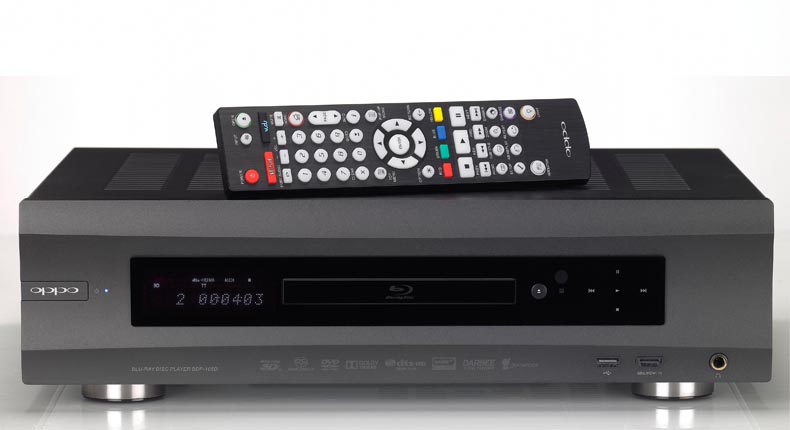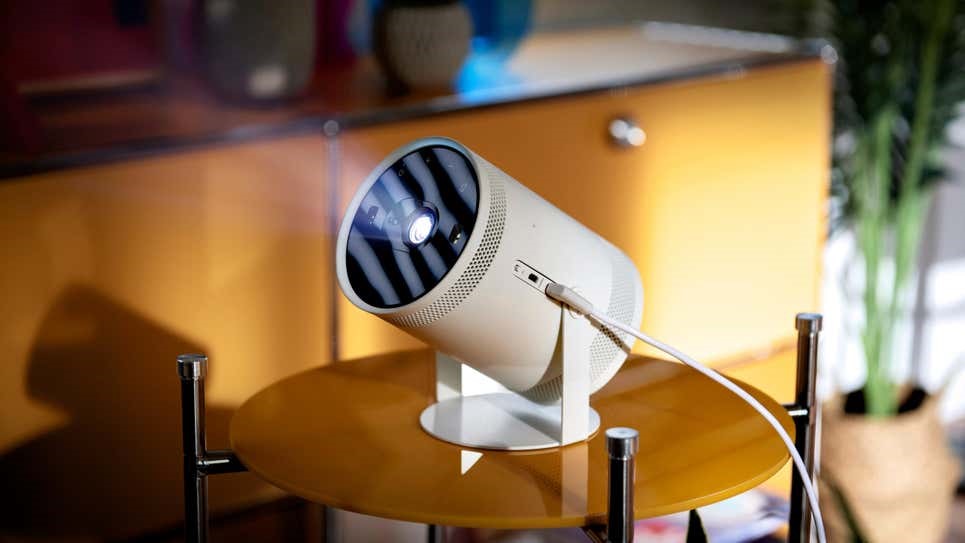What Hi-Fi? Verdict
If you want a source that does it all with movies and music, the Oppo is it
Pros
- +
Excellent picture quality
- +
Fine sound through stereo and multi-channel
- +
Format compatibility
- +
Good build and finish
- +
Well featured
Cons
- -
Display could be more informative
- -
Bass could be tauter
Why you can trust What Hi-Fi?
In today’s market spending £1100 on a Blu-ray player seems awfully steep. After all, you can buy a truly accomplished machine such as our newly crowned Product of the Year, the Sony BDP-S7200, for just over £200. Can this high-end Oppo justify the additional expense?
On initial acquaintance, we weren’t so sure - but after having spent some time with the BDP-105D our opinion has changed markedly. First of all, it would be wrong to call this just a Blu-ray player. Unlike some upmarket machines, it matches the wide-ranging feature-set of most mainstream players, but takes the opportunity to add a couple of extras for hardcore audio and video fans.
Features
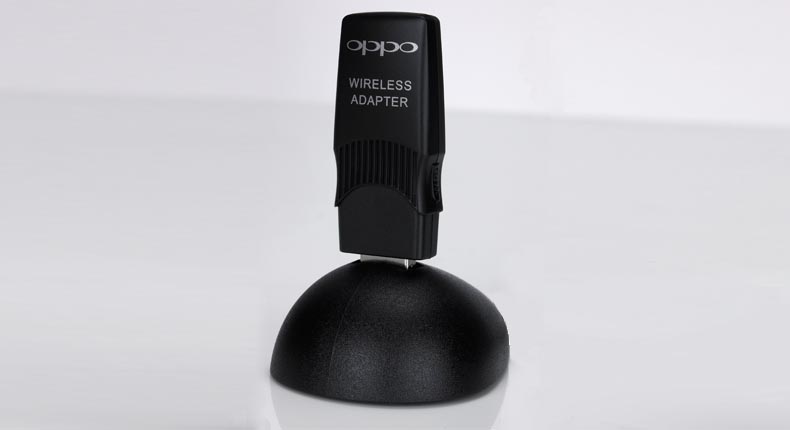
Alongside the standard disc trio of Blu-ray, DVD and CD, the BDP-105D will also play SACDs and DVD-Audio discs. While the likes of SACD and DVD-Audio are hardly mainstream formats, they are good ways of getting a high-resolution music signal into your system, and that can’t be a bad thing.
As has become common, the Oppo has smart functionality: it’ll deliver Netflix, You Tube and BBC iPlayer among others and can stream high-resolution music files (up to 24-bit/192kHz) across a home network. We’re impressed with the BDP-105D’s connectivity. It feels as if Oppo has tried to cover all bases.
There’s an ample supply of type A USBs (three) and HDMIs (MHL-compatible inputs along with a pair of outputs), as well as the usual digital audio of optical, co-ax and (type B) USB. The optical and coax are limited to 96kHz sampling rates, while the USB accepts 192kHz.
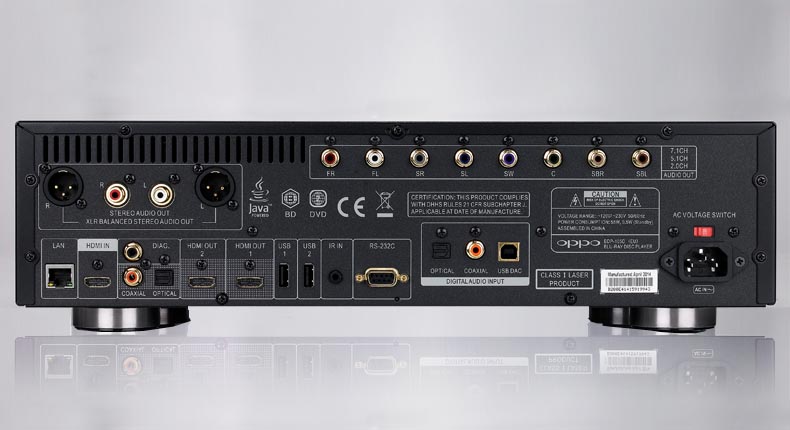
Digital inputs on a product such as this are only really useful if the on-board DAC is a good one – and it is. The design uses high-quality ESS Sabre DAC chips, as found on Audiolab’s hugely-talented £600 M-DAC as well as pricier digital products.
There’s no shortage of analogue outputs, either. Alongside single-ended and (the better sounding) balanced XLR stereo connections, you’ll find increasingly rare multi-channel audio outputs designed for use with older receivers that don’t have HDMI inputs, or can’t cope with SACD or DVD-Audio signals through them.
Build and design
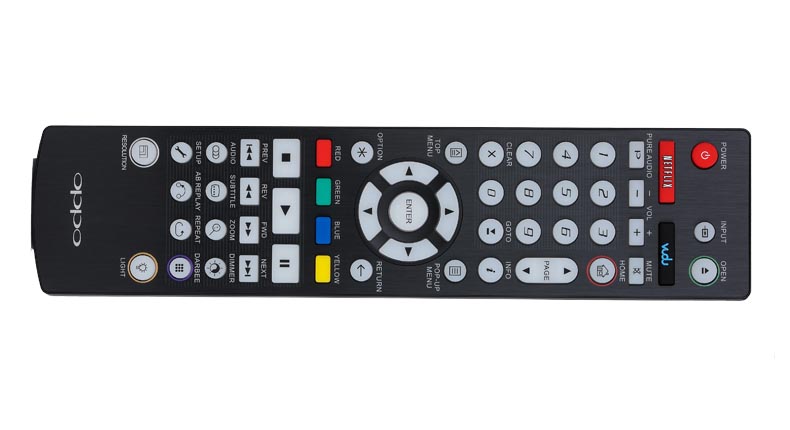
This Oppo impresses straight out of the box. It’s a big, solid unit that, while not pretty, gives off a bold, purposeful aura. It feels like a luxury piece of kit, making cheaper alternatives seem insubstantial.
The front-panel controls are nicely responsive, even if the display isn’t quite as informative as we’d like. Want to know the sampling rate of the piece of music you’re streaming? Good luck with that.
The remote is a similarly substantial unit. It’s chunky, positive in use and backlit. We wish more manufacturers would add backlighting to their remotes. It makes a big difference in a darkened room. We like this handset, even if its layout is a touch busy.
A ‘MediaControl‘ app is available for iOS and Android devices, and works pretty well. It’s the most convenient way to control network streaming and offers a standard handset layout or touchpad; the latter is nice, but frustrating, too.
Performance
Blu-ray performance seems as good a place to start as any, and here the BDP-105D excels. We love its picture performance. Oppo has added a DARBEE processing function with a view to letting the user fine-tune the image to preference.
We played with it for a while and decided we liked the picture better without the additional processing, so left it alone. The Oppo’s picture doesn’t need much help in any case. Watch the likes of Pacific Rim and it’s hard not to be impressed by the crisp detailing and richly textured colours. Every edge is precisely drawn, but not so much that it looks unnaturally sharp.
The dimly lit fight scenes show off the player’s impressive insight into blacks and strong contrast performance. There’s plenty of punch to brights, but this stops short of glare and exhibits a pleasing degree of subtlety when required.
Every aspect of picture quality from motion handling, to naturalness of colours or noise levels is top class, and a clear step better than already impressively capable machines such as Marantz’s UD7007 and Panasonic’s DMP-BDT700.
At this stage, it’s only fair to point out that both these machines now retail for around half the Oppo’s price, so it’s clear the 105D needs to do more to justify its price premium, and we think it does.
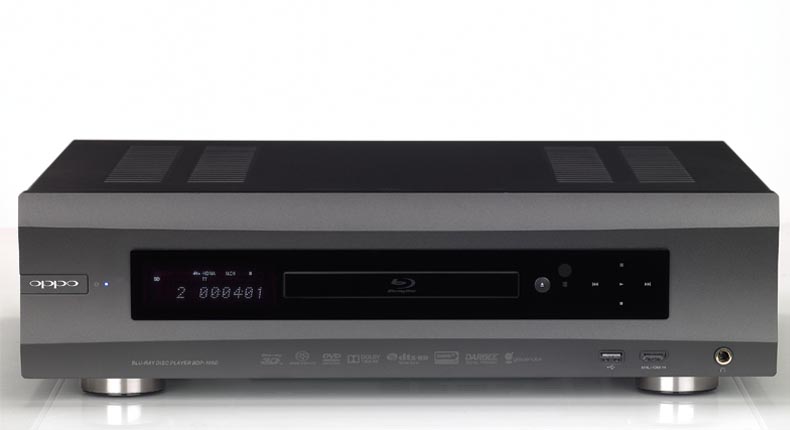
DVD picture quality is equally impressive. There’s the expected drop in performance the format’s lower resolution dictates and small increases in motion artefacts and noise levels. Yet, watching Stoker, we can’t help but revel in the naturalness of the colours and terrific level of insight.
There’s real subtlety to shades and colours of leaves and skin tones are a joy to see. This player continues the good work when it comes to movie sound. It has a bold, full-bodied presentation that delivers voices with real finesse and clarity, while rendering explosions and suchlike with power and authority.
Detail levels are very high and the sound presentation stays composed even during busy scenes. Here again, the Oppo pulls clearly ahead of other premium machines, making for more entertaining and engaging results. This advantage is rammed home when it comes to stereo music replay.
It doesn’t matter whether we’re talking about Eric Bibb’s Where the Green Grass Grows on SACD, a CD of Carmina Burana or a DVD-A of Missy Elliot, the results are consistently pleasing. There’s a lovely full-bodied balance with rich low frequencies packing plenty of power. Vocals are expressive and easy to follow, while the treble just sparkles.
There’s plenty of bite at high frequencies but it’s coupled to an impressive degree of refinement.
It’s a highly listenable sound, but by the higher standards of dedicated music players it’s clear that the Oppo could do with more agility and crisper rhythmic drive. The bass could be a little tauter, too – it's weighty but doesn't always tell you as much as the precise Pioneer BDP-LX88.
As it is, music sounds a touch relaxed and relaxing, even when the source material isn’t meant to be.
In musical terms we think the BDP-105D is broadly the standard of a good disc player like the Marantz CD6005, which is still way better than any rival we’ve heard manages. Even the Oppo’s headphone output sounds good, mirroring the performance heard through the standard line-level connections.
The story remains much the same when we connect to the internal DAC with our MacBook or stream music files across our test network. Regardless of what we listen to, the Oppo’s refined, authoritative nature comes to the fore. A little more excitement wouldn’t go amiss, but it’s not enough of a shortcoming to take away from what is a really good performance.
Verdict
It’s easy to dismiss a machine like the BDP-105D as being too expensive. If all you want is a way of playing Blu-rays and DVDs, it probably is.
However, if you crave a really talented source component that plays pretty much all movie and music content to a high standard, the story is very different. Want one machine to do it all? Here it is.
What Hi-Fi?, founded in 1976, is the world's leading independent guide to buying and owning hi-fi and home entertainment products. Our comprehensive tests help you buy the very best for your money, with our advice sections giving you step-by-step information on how to get even more from your music and movies. Everything is tested by our dedicated team of in-house reviewers in our custom-built test rooms in London, Reading and Bath. Our coveted five-star rating and Awards are recognised all over the world as the ultimate seal of approval, so you can buy with absolute confidence.
